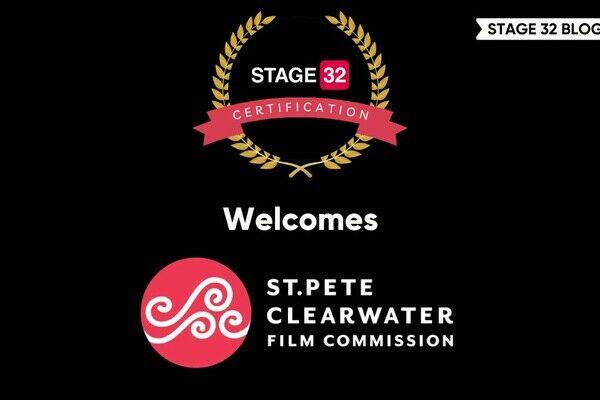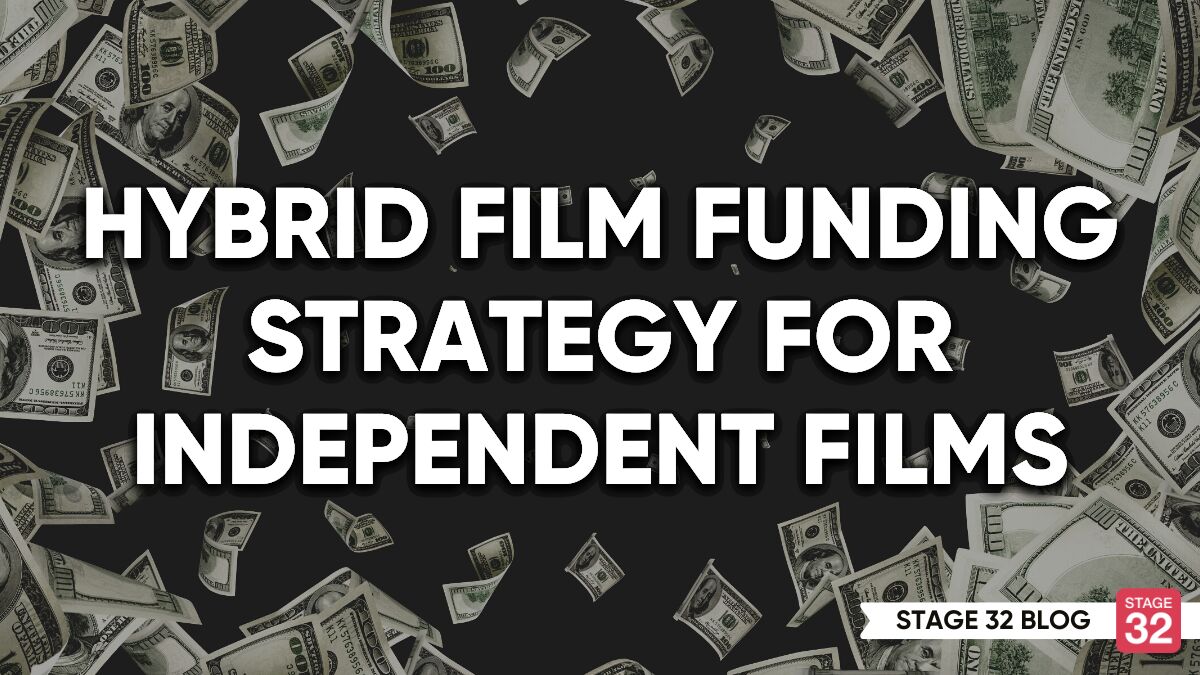Hybrid Film Funding Strategy For Independent Films
Having been in film for decades, producing and distributing many films and documentaries, I am very aware of the difficulties in trying to fund independent films. After some deliberation, my approach to project funding has changed. New technologies and changes in funding legislation have created innovative funding sources that should be incorporated into an updated "hybrid film funding strategy". New funding sources have become available, but it is also important to identify the involvement and participation of the general public in these new financial investment opportunities.
Below is my "hybrid film funding strategy" incorporating sources I feel are practicable, feasible, and effective and the costs are manageable. This is not a universal panacea for project funding but an approach that may help producers focus on new ways to help their projects get funded. At the very least it may stimulate discussion on these new innovative ways to fund projects.
INITIAL SEED FUNDING
Raise money to generate more significant funding.
Your own dollars; investment from family, friends, etc. These funds are to be used to pay the initial set-up expenses of your project but also provide funds to generate the larger investments required for the project itself.
NFTs
Create and sell NFTs and build a community.
The new innovative blockchain technology has created NFTs and NFTs can and have provided a new funding source. In addition, the creation and sale of NFTs can create a community that can significantly benefit the project and allows the community to be engaged and participate in the project in new and fun ways.
Benefits to NFTs in film projects are:
- Creating unique items to do with the project to sell to the public.
- Create a project community. A connection to the film itself.
- Enable fans and the public to be part of the project.
- Provide utilities in the NFTs to encourage participation in the film process such as special passes; meet the stars; go to the film set.
Any project would have to be of a type or genre that would lend itself to being marketed via NFTs. NFTs must have a marketing element to stimulate sales such as a celebrity; wildlife preservation; art; memorabilia categories.
Without community interest, sales and funding will be minimal.
NFTs can be a source for partial project funding.
Note: With the recent successful utilization of NFTs in the partial funding of the Anthony Hopkins film “Zero Contact”, a concrete example of film funding using NFTs has been established.

BLOCKCHAIN TECHNOLOGY
Makes investors secure and comfortable with their investment.
Blockchain technology creates a structure of benefits that enables a positive impact for potential investors in a project. This new innovative technology will as act as an umbrella for the whole project providing benefits to the company, its producers, and the investors.
Benefits include.
- Transparency of transactions
- Use of smart contracts
- Security of transactions
- Efficiency and speed of transactions
- Immutability of information
- Creating a DAO project community
Blockchain provides an additional level of comfort and security to investors.
EQUITY CROWDFUNDING
Go to the public on your terms and raise major funding.
Crowdfunding has been an existing source of project funding for many years, but recent legislation has created Equity Crowdfunding.
The public can now invest in private companies thanks to rules set forth by the JOBS Act and the creation of equity crowdfunding (2015). Before that, startup investing was only available to accredited investors, and wealthy people.
Equity crowdfunding raises capital from the public, through the sale of securities in a private company, that is not listed on stock exchanges.
This source of funding can provide a significant portion of the project funding.
Note: This type of funding must go through an authorized equity crowdfunding platform.
There are basically two forms of equity crowdfunding:
- Regulation Crowdfunding
- Reg A+ type funding
The differences between these two funding types are related to investor limitations, the differing amounts of money companies are permitted to raise, and differing disclosure and filing requirements.
Regulation Crowdfunding:
- Raise up to $5M each year.
- Launch in 4-6 weeks.
- With Regulation Crowdfunding, you can raise capital from thousands of investors. You can raise capital from anyone.
- Equity Crowdfunding platforms ensure that your offering is conducted properly within securities laws.
- Entrepreneurs set their own valuation and terms for the raise and have full control of the offering.
- With equity crowdfunding, shares can be traded on public markets.
- Costs between $4,000-$10,000 for the financial review and legal documentation of the offering.
- To raise capital on an equity crowdfunding platform, companies must be US-based registered legal entities.
Note: With the recent successful regulation of crowdfunding offering of the Bill Shatner documentary, a concrete example of project funding using equity crowdfunding has been established.
Regulation A+ Funding:
Companies can raise money from the public and accredited and non-accredited investors can participate. It is no longer fundraising from the wealthy, but from the public at large.
With Regulation A+, companies have two paths to explore.
Tier 1: Raise up to $20m.
Tier 2: Raise up to $75m.
Beware there are clear regulations to follow.

USUAL OTHER SOURCES
These sources help fill the project financing gap.
Film financing options are many and varied. Tax credits, co-production, in kind, deferral, loan, etc. are available to assist in funding your film.
Film Tax Incentives
Also known as movie production incentives, are tax benefits offered on a state-by-state basis throughout the United States to encourage in-state film production.
- Post-Production Deals
A post-production facility offers its services on a deferred basis or on a discounted basis, in return for the deferral payment plus an equity stake in the net profits.
- Cast, Crew, and Producer Deferrals
Is this item really film financing? The answer is yes, as it reduces the amount of finance a producer needs to go into production. A deferment is an amount or fee being delayed for payment to a future time.
- Production Equipment Deals
It is not unusual to come to some form of financial arrangement with the sound mixer or lighting people or camera director of photography to have their equipment on the production with some form of partial payment upfront and the balance of the equipment rental from film revenues in an agreed order of recoupment position.
- Co-production
A co-production is a joint venture between two or more different production companies (can be domestic and/or international) for the purpose of producing a film project. In so doing, the parties share costs, duties, and revenue on an agreed basis.
PRE-SALES
If you can go for it.
Pre-sales are the selling (licensing) of certain exploitation rights to the film in certain territories and often occur before the film has gone into production. The pre-sales are part of the production funding and enable the producer to help fund the film and keep more equity available.
Note: I have had the experience with venture capitalists and for a long time they have been a “go-to” source for capital but they come with certain restrictions. Therefore, I have excluded this funding source from my new funding approach.
The concept for this hybrid funding strategy is to incorporate different funding sources to generate the required funds for the project.
If you would like more information on how to finance your film or television projects, be sure to check out these fantastic resources here on Stage 32.
Let's hear your thoughts in the comments below!
Got an idea for a post? Or have you collaborated with Stage 32 members to create a project? We'd love to hear about it. Email Emily at blog@stage32.com and let's get your post published!
Please help support your fellow Stage 32ers by sharing this on social. Check out the social media buttons at the top to share on Instagram @stage32 Twitter @stage32 Facebook @stage32 and LinkedIn @stage-32
| How To Produce An Audio Drama |
| Why Your Reputation Is More Important Than Your Talent |
Search Stage 32 Blog
There are now 3619 blog posts for you to enjoy. Search them all by tags below.
Acting, Advice, Cinematography, Coffee & Content, Composing, Contests, Distribution, Featured, Filmmaking, Financing, Inspirational, Networking, Producing, Screenwriting, Success Stories, Tips, Trending,Relevant Tags
Recommended Articles

Celebrate the September 2024 Stage 32 Community’s Successes!

3 [Frightening] Writing Fails to Avoid in a Horror Script

How To Stay on Top of Casting Directors, Agents & Producers with Google Alerts

11 Types of Horror Scripts to Scare Up This Halloween

Red Carpet Roll-Out: October 2024's New Executives at Stage 32!

How Stage 32 Was An Essential Tool For Making My Short Film!

Stage 32 Certification Welcomes The St. Pete-Clearwater Film Commission!

How to Make The Director & Film Composer Collaboration Sing

How to Have a Healthy Relationship with Criticism of Your Art/Work






